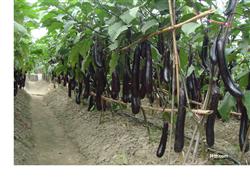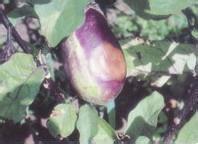How to fertilize eggplant scientifically?

How to fertilize eggplant scientifically? Please introduce the following methods to guide eggplant fertilization: fertilization at seedling stage requires that the bed soil must be fertile in order to cultivate seedlings with thick stems, short internodes and well-developed roots. In 11.3 square meters of bed soil, 200 kg of rotten organic fertilizer, 0.5 kg of superphosphate and potassium sulfate were applied to mix the bed soil and fertilizer evenly. It can also apply 100-150 kg of mixed fertilizer of human manure and 1 kg of compound fertilizer of nitrogen, phosphorus and potassium. Base fertilizer eggplant likes fertilizer and is tolerant to fertilizer, so it is necessary to re-apply base fertilizer. Before ploughing, 5000-7000 kg of organic fertilizer is applied per mu, combined with 15 kg of superphosphate and 10 kg of potassium sulfate, and then ploughing and soil preparation; 3000-5000 kg of organic fertilizer per mu can also be applied before ploughing, and then ridge or bed. When transplanting, 1500 kg of organic fertilizer and 25-50 kg of nitrogen, phosphorus and potassium compound fertilizer can be applied in holes or furrows. Can also be combined with the application of trace elements zinc sulfate 1 kg and manganese sulfate 2 kg. The life of topdressing eggplant requires topdressing many times for a long time. The absorption and nourishment of eggplant increases rapidly after full flowering, so the key period of topdressing is from door eggplant stare to four door bucket harvest. During this period, you can top fertilize every 10 days, applying 15-20 kg of ammonium sulfate or 7.5-10 kg of urea, or 10-15 kg of ammonium nitrate, of course, 500-600 kg of mature human feces and urine. Fertilization methods can be ditch application, hole application or flushing application with water. It should be noted that in the late growth stage of eggplant, it is best not to apply phosphate fertilizer, so as not to promote the development of seeds in the fruit, seed coat hardening and reduce the commercial value of eggplant fruit. In the process of fertilization, we must grasp the fertilization principle of giving priority to organic fertilizer and supplemented by chemical fertilizer, and the amount of chemical fertilizer should not be too large, especially nitrogen fertilizer, so as to avoid a large accumulation of nutrients in flower buds, resulting in the formation of abnormal carpels in the process of cell division. it even leads to the accumulation of nitrate in eggplant tissue. Click to get more eggplant planting techniques click to get more vegetable planting techniques
- Prev

Planting Prospect of Pleurotus ostreatus
Planting Prospect of Pleurotus ostreatus
- Next

What medicine can be used to treat rotten eggplant fruit?
What medicine can be used to treat rotten eggplant fruit? Please guide the prevention and control of rotten eggplant fruit by using the following drugs: 25% metalaxyl, 58% metalaxyl manganese zinc, or 40% ethylphosphine aluminum, or 64% alum (oxalaxyl + mancozeb), or 77% can be killed (copper hydroxide). Or full-complex mancozeb and other spray control.
Related
- Where is it suitable to grow horseradish in China? it is expected to see the middle altitude horseradish in Alishan.
- How to prevent tomato virus disease reasonably? (Control methods included)
- Many people like to plant towel gourd on the balcony. What are the main points of this method and management?
- What crops can chili peppers be mixed with?
- Fertilization techniques and matters needing attention in Tomato
- What are the grafting techniques for peach seedlings in spring?
- Harm and control methods of root swelling disease of Chinese cabbage
- What are the pests of sweet potatoes? How to prevent and cure it?
- Symptoms, causes and Control methods of navel Rot in Tomato
- The cause of "Cucumber rotten bibcock" in Farmers' planting Cucumber and its Control Plan

